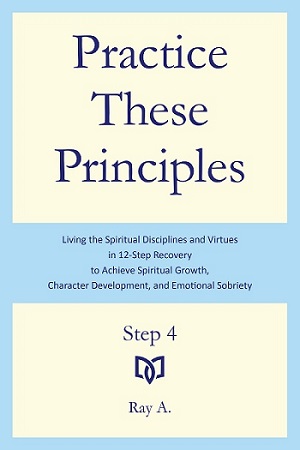
“A moral inventory is an examination of our character defects and the emotional liabilities associated with them. These are described in the Big Book as manifestations of self, of our spiritual malady of selfishness and self-centeredness. Elaborating on this fundamental AA premise, the 12&12 describes them further as representing “instincts gone astray.” These are understood as innate drives and natural desires that are essential to our survival and wellbeing. Their selfish pursuit causes them to exceed their “God-given” purpose and get “out of joint” (p. 42), turning them into the physical, mental, and spiritual liabilities that account for most of our emotional difficulties and the problems that we face in life.
In Step 4 we seek to discover what these liabilities are, the ways in which, under the relentless drive of distorted instinct, self becomes manifest in our lives. We seek to make a survey of our conduct with regard to our primary instincts, which using a handy mnemonic formula the 12&12 broadly identifies as our instincts for “sex, security, and society” (p. 50). This provides the conceptual and organizational framework in which to build our inventory. It guides us as we try to answer the practical question of exactly how to go about taking inventory of ourselves.
The Big Book suggests we start by zeroing in on anger, fear, and resentment, three emotions which are especially troublesome for alcoholics and which, if left unexamined, may lead us back to the bottle. It therefore takes these three emotions as the subject of what an initial inventory might look like and provides us with a sample, introducing a basic format that can lend itself to inventories of other emotional and character defects.
Components of Inventory
We will therefore examine this Big Book sample closely. We will try to flesh it out and build on it in the context of the full text of Step 4 in that work. While we will make some necessary references to the 12&12, we will leave a full exploration of Step 4 in that book for the next chapter, where we will seek to reconcile the two texts and show that they complement each other. The Big Book sample is reproduced below. Inside borders have been inserted for clarity.
. . .
Our brief analysis of the Big Book sample shows that the format it uses can and indeed needs to be amplified in order to incorporate all the elements the book itself considers necessary for an inventory of resentments to be thorough. We have expanded that format from three to six columns, replacing a partial with a full column to list our fears as well as other emotions, and adding a column each to list our character defects and the virtues that can replace them. We have also modified the heading of two original columns to reflect a key idea latent in the Big Book and in the 12&12: that the real cause of our emotions is the way we construe or perceive a situation as it affects our concerns or the things that we care about. Using this expanded format, we have tried to show what a full inventory of our resentments would actually look like.
On first impression, this might sound like a lot more than what the Big Book is proposing. It isn’t. The sample inventory is deceptively simple and can easily be underrated or dismissed. Big Book meetings generally rush through it and usually skip reading it altogether. Seldom do we discuss it in the context of the rest of the text. We therefore miss all that it might teach us if only we would dig a little bit deeper. If we mention it at all when we talk about how we did our own inventory, it is only to stress that we did it “the way it says in the Big Book.” This points to another impression many of us appear to have. And this is that the Big Book and the 12&12 offer us two different ways of doing Step 4. In the next chapter we will show that this impression is mistaken."
– From Part I: Taking Inventory, Chapter 2: The Big Book Sample, pp. 21, 30
For more PTP4 Excerpts, please click on link.